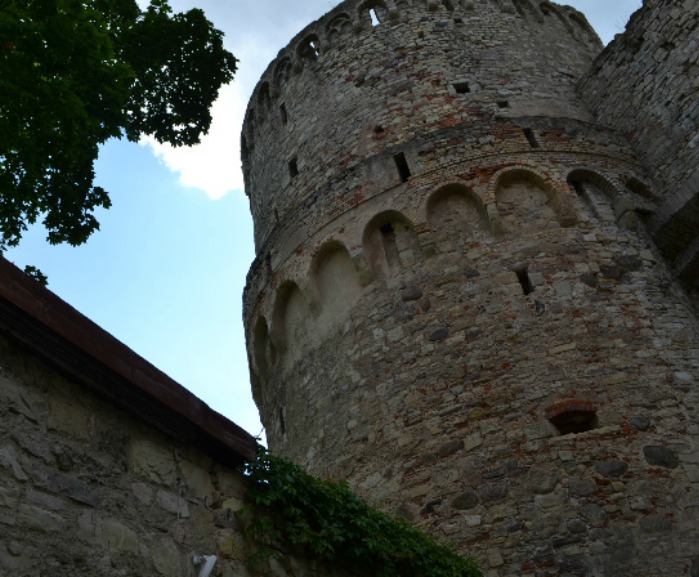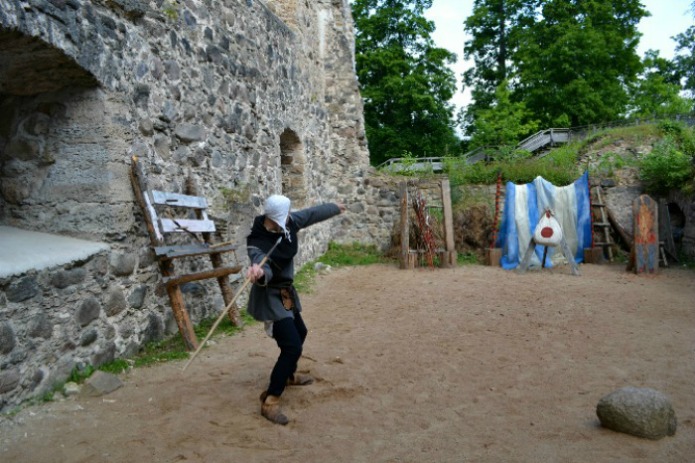Travel with Terri
Get to Know the Cities of Latvia
Story and Photos by Terri Marshall
Latvian poet Maris Caklais once said, “I am rich, I own everything that has happened to me.” If the same holds true for countries, Latvia is very rich indeed. For more than 700 years, Latvia’s coveted location on the Baltic Sea has made it a target for neighboring super powers. This country has been subject to German, Polish, Swedish and Russian rule. Even the Russian Czar Ivan the Terrible occupied Latvia at one point. Despite unwanted rulers and numerous wars, Latvia has held on to its cultural roots. This is evident in its cities where Latvia’s past and present intersect. Latvians are proud of their country and culture and when you visit their cities, you will understand why.

The Charms Of Cesis
Located in the northern part of the Vidzeme Heights next to the Gauja National Park, Cesis is surrounded by natural beauty. It is a charming blend of historic and modern Latvia. The centerpiece of the city is the Cesis Castle complex, which consists of the ruins of an original 13th-century Livonian castle and an adjoining newer 18th-century castle. Dressed in Middle Ages period clothes, docents are on hand to help you explore your own inner knight or lady with a bit of archery practice or a lesson in stilt walking. A candlelit climb up the narrow winding tower staircase in the castle is rewarded with views of the surrounding woodlands and glistening lakes.
One of the oldest monuments to medieval architecture in Latvia, St. John’s Church, dominates the center of the Cesis Old Town. It is surrounded by winding cobblestone streets lined with colorful wooden houses, restored art nouveau facades and shops filled with locally made crafts. Cesis is also home to Vidzeme Concert Hall, one of Latvia’s most contemporary cultural centers, which combines a concern hall, cinema and music school under one roof.

Adventures In Sigulda
As part of the Gauja National Park, thick forests surround Sigulda. The town is situated on the banks of the River Gauja, which is dotted with sandy caves. Sigulda is often referred to as the “Switzerland of Latvia” due to its hilly terrain and expansive river valley. The best way to view the picturesque landscape is from the Baltics’ only cable car that travels 138 feet above ground linking the two banks of the River Gauja. The ride overlooks an amazing landscape, which contains three mighty castles and a view of the ancient valley of the Gauja. If you are up for an adrenaline pumping adventure, bungee jumping can be done from the cable car at the highest point of the crossing. Less terrifying adventures like obstacle routes, a toboggan track and chairlifts are available at Tarzan’s Adventure Park – the largest outdoor adventure park in the Baltics.
Built in the Middle Ages, the Livonian Order Sigulda Castle provides a glimpse into life in Medieval times. Exhibits tell the story of how the Livonian Order was formed, how its members dressed and how they armed themselves. In one room you can try on a knight’s suit with all of its heavy armor. It will certainly make you appreciate any future knights in shining armor you encounter.
Nearby in the town of Ligatne, tours of a secret Soviet bunker are available. The bunker was intended as the secret hiding place for the first secretaries of the Soviet Communist Party comrades Voss and Pugo. It was one of the strategically important sites in Soviet Latvia in case of a nuclear war. The original underground equipment has been preserved just as it was when the Soviets left. A canteen within the bunker serves a typical menu from that era.

History And Architecture In Riga
Latvia’s capital city, Riga, is an intriguing blend of architecture, history and culture. Included on the UNESCO World Heritage list, Riga is located in the central part of the country on the south coast of the Gulf of Riga. It is the largest city in the Baltics and has emerged from its troubled history as a thriving multi-cultural city.
Riga’s Old Town is the city’s historic center. A labyrinth of narrow cobblestone streets wind past medieval architectural marvels, remnants of the fortification wall that enclosed the city from the 13th to 18th century still remain. The churches of Riga are spectacular from the Riga Dome Cathedral to St. Peter’s Church with the city’s tallest steeple spire. In the Middle Ages, Riga was a member of the trade route known as the Hanseatic League; the ornate House of the Blackheads reflects the prosperity of that period. Riga is also known for its exquisite art nouveau properties and has the largest concentration of any city worldwide.
Before visiting Riga I knew I would enjoy the history and architecture, but I did not expect such a delicious variety of cuisines. From traditional Latvian foods like smoked meats and pork roast to modern innovative contemporary dishes, each meal was a gastronomic delight.
The city’s markets are another excellent place to experience the tastes of Riga. Housed in former zeppelin hangars, Riga Central Market is the largest food market in Europe. Thousands of stalls display fresh produce, brilliantly colored flowers, meats, cheeses, fish and everything in between. In the city’s Bohemian neighborhood, Kalnciema Quarter Market is a weekly farmer’s market that gathers artisan producers from around the country to sell homemade goods like traditional carrot and potato pastries, smoked meats, hemp seed spread and fruit wine with many of the stalls offering tastings.
Stop in one of the markets, gather some picnic supplies and find a grassy spot beside the canal that meanders through the city center. It is a perfect way to enjoy a sunny day in Riga!

